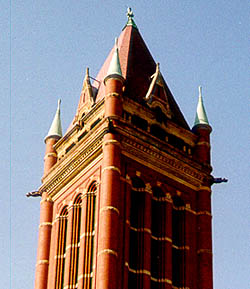
Allegany County is located in the northwestern part of the U.S. state of Maryland. As of the 2020 census, the population was 68,106. Its county seat is Cumberland. The name Allegany may come from a local Lenape word, welhik hane or oolikhanna, which means 'best flowing river of the hills' or 'beautiful stream'. A number of counties and a river in the Appalachian region of the U.S. are named Allegany, Allegheny, or Alleghany. Allegany County is part of the Cumberland metropolitan area. It is a part of the Western Maryland "panhandle".

Frostburg is a city in Allegany County, Maryland. It is located at the head of the Georges Creek Valley, 8 miles (13 km) west of Cumberland. The town is one of the first cities on the "National Road", US 40, and the western terminus of the Western Maryland Scenic Railroad. It is part of the Cumberland metropolitan area.
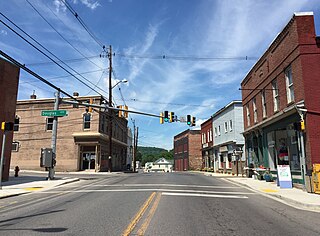
Lonaconing is a town in Allegany County, Maryland, United States, located along the Georges Creek Valley. It is part of the Cumberland, MD-WV Metropolitan Statistical Area. The population was 1,214 at the 2010 census.

Robert Moses "Lefty" Grove was an American professional baseball pitcher. After having success in the minor leagues during the early 1920s, Grove became a star in Major League Baseball with the American League's Philadelphia Athletics and Boston Red Sox. One of the greatest pitchers in history, Grove led the American League in wins in four separate seasons, in strikeouts seven years in a row, and had the league's lowest earned run average a record nine times. Over the course of the three years from 1929 to 1931, he twice won the pitcher's Triple Crown, leading the league in wins, strikeouts, and ERA, while amassing a 79–15 record and leading the Athletics to three straight AL championships. Overall, Grove won 300 games in his 17-year MLB career. He was elected to the National Baseball Hall of Fame in 1947.

The Western Maryland Railway was an American Class I railroad (1852–1983) that operated in Maryland, West Virginia, and Pennsylvania. It was primarily a coal hauling and freight railroad, with a small passenger train operation.

Georges Creek Valley is located in Allegany County, Maryland along the Georges Creek. The valley is rich in wide veins of coal, known historically as "The Big Vein." Coal was once extracted by deep mines but is only mined today through surface mining. The Georges Creek Valley was once a major center for the US coal industry.
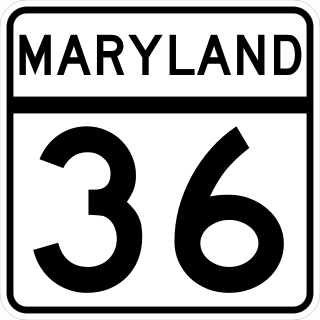
Maryland Route 36 is a 29.43-mile (47.36 km) state highway located in Allegany County, Maryland, United States. MD 36's southern terminus is at the West Virginia Route 46 (WV 46) bridge in Westernport and its northern terminus at U.S. Route 40 Alternate near Cumberland. Between Westernport and Frostburg, it is known as Georges Creek Road, and from Frostburg to Cumberland it is known as Mount Savage Road. Like the majority of Maryland state highways, MD 36 is maintained by the Maryland State Highway Administration (MDSHA).
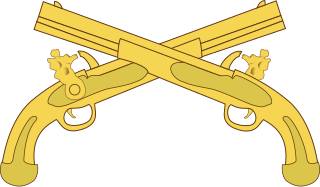
The 372nd Military Police Company is Military Police Corps unit of the United States Army Reserve. It is based out of Cresaptown, Maryland. Eleven former members of the unit were charged and found guilty of war crimes in connection to the Abu Ghraib torture and prisoner abuse scandal during the Iraq War. Another member of the unit, Joe Darby, was awarded the Profile in Courage Award by the Kennedy family for exposing the prisoner abuse. The unit is credited with the capture and stabilization of the city of Hillah along with the 1st Marine Regiment. It was also responsible for guarding main supply routes used by American forces in Iraq.

The Maryland Mining Company is a historic coal mining, iron producer and railroad company that operated in Allegany County, Maryland, United States.
The Georges Creek Railroad was a railroad operated by the Georges Creek Coal and Iron Company in Western Maryland. The railroad operated from 1853 to 1863, when it was acquired by the Cumberland and Pennsylvania Railroad (C&P).
Mountain Ridge High School is a high school in Frostburg, Maryland, United States, that houses over 1000 students from the Georges Creek Valley, the Greater Frostburg vicinity, and the Westernport region. Mountain Ridge is part of Allegany County Public Schools. The school mascot is a miner and the school colors are red, black, white and gold.
D. Lindley Sloan was an American jurist who served as chief judge of the supreme court of the U.S. state of Maryland, the Court of Appeals.
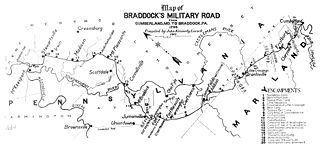
Cumberland, Maryland is named after the son of King George II, Prince William, the Duke of Cumberland. It is built on the site of the old Fort Cumberland, a launch pad for British General Edward Braddock's ill-fated attack on the stronghold of Fort Duquesne during the French and Indian War.
The Carroll Daily Times Herald is a daily newspaper in Carroll, Iowa.

The Concrete Herald is a newspaper serving the town of Concrete, Washington, along with other communities in Skagit County in the United States. The newspaper has received multiple awards from the Washington Newspaper Publishers' Association, Washington State Press Club, and various other state and local organizations. The Herald's publications have initiated various public projects in the area and played a key role in fighting industrial pollution in Concrete. The publication serves as a cohesive element for the community of the Upper Skagit Valley. Published as a weekly newspaper from 1901 until its dissolution in 1991, The Concrete Herald was relaunched as a monthly publication in 2009.
The Frostburg Mining Journal was a weekly newspaper published in Frostburg, Maryland, from September 30, 1871, to April 18, 1913, and then again briefly from 1915 to 1917.

The Frostburg Forum was a weekly newspaper published in Frostburg, Maryland, U.S. from 1897 to 1901. It was founded by John B. Williams and Henry Francis Cook, who had joined to form the Forum Publishing Co. Cook had already began publication of another newspaper, TheFrostburg News, earlier that same year, and would subsequently go on to publish TheFrostburg Gleaner in 1899. The paper was initially edited by George T. Goshorn, a veteran newspaperman who had previously published newspapers in West Virginia in addition to working for the Government Printing Office in Washington, D.C. By 1901, the Forum had been purchased by the Frostburg Home Building and Conveyance Company and was edited and published by its manager, N. Ralph Moore. The Forum ceased publication that same year, however, with Moore going on to edit the Linton Record.

The Frostburg Gleaner was a weekly newspaper that was published from 1899 to 1901 in Frostburg, Maryland, U.S. It was founded by Henry Francis Cook, who acted as editor and publisher for the paper's short existence. Cook had previously established The Frostburg Forum and The Frostburg News in 1897, and had also published the Friendsville Collaborator in nearby Friendsville, Maryland. After leaving the Forum shortly after its inception, Cook worked as a job printer until he started the Gleaner.
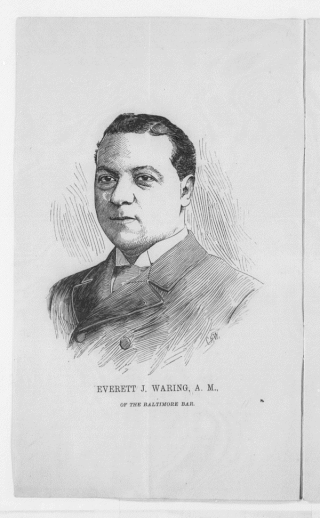
Everett J. Waring was the first African-American person admitted to the Maryland State Bar Association in 1885 and the Supreme Court Bench of Baltimore on October 10, 1885. He practiced before the Supreme Court of the United States and the Maryland State Appellate Court. He represented individuals involved in the Navassa Island riot of 1889, which occurred after African American men were lured to the island to gather guano to be used as fertilizer. The men were subject to inhumane treatment, low pay, and high cost of goods. He lost the Jones v. United States jurisdiction case and the men were found guilty.

Alice Roberta Manicur was an American educator and college administrator. She was dean of students and vice president of Frostburg State University, and president of the National Association for Student Personnel Administrators. She was inducted into the Maryland Women's Hall of Fame in 2012.














